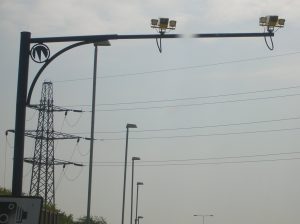I was reading an article about those crazy Dutch people, on the one hand very liberal with the sex, drugs and rock n’ roll, Techno, but when it comes to driving they are very much the opposite. The latest idea is to use Average Speed Cameras or SPECS (for us) the type we often see around road works on the motorway with a 50mph limit but on provincial roads. This appears to include UK Equivalent of A-Roads.
I did a little research and it seems the Dutch have a kind of similar system to us, only they have a version of the Autobahn called the Expressway for faster vehicles, along with Highway (Motorway) and Trunk Roads these are supplemented by the Provincial Roads, which which are a mixture of Major A-Roads (2+ Lanes) and Dual Carriageways. We in the UK are already taking this step with the Major A Roads such as the A14 and A40, but there are calls to introduce these on less major A-Roads, such as the A6. There are a few stretches between Manchester and Stockport, and Stockport and Hazel Grove which are of concern. One of them once had 3 speed cameras within 1 mile, which had an interest legal case where someone got hit by all 3 but argued it was a single speeding offence caught 3 times.
The research has always shown that when people see a speed camera they often dangerously brake increasing the risk of causing a collision. This is part of the reason they are painted yellow, locations are listed, and in general police don’t hide when using speed guns. On a side note its worth noting the police mobile cameras get you up to 1 mile away, and only need an area the size of a door mirror to get you, so by the time you see them, they already have you. It has also been shown that many persistent and deliberate speedsters, will simply slow down for a camera and then leadfoot it right after.
SPECS Cameras
A new type of camera were created called SPECS which are Network Cameras, oddly SPECS isn’t an acronym or anything and has no meaning, but its a SVDD (Speed Violation Detection and Deterrent) System which uses long range ANPR (Automatic Number Plate Recognition) tracking over the network of connected cameras. Specs on the A40 for example the cameras are between 950 meters and 5,198 meters (approx 1km and 5km) apart, so they aren’t always the same distance.
Its also been suggested that consecutive cameras are not always linked, and they can be randomly linked or clustered into groups. I’ve created a fake average speed zone on the Inner Ring Road in Manchester City Centre. If you imagine Red, Blue and Black are only connected to each other 24/7, and randomly Black Connects to Blue, and sometimes Black to Red and so on. This method is called Alternating Groups in a Many-to-Many Formation. This system I would say is to make it impossible to game the system, but also means its potentially possible you could get away with speeding if a situation like 6-7-8 existed, where 3 consecutive cameras are in groups so aren’t connected.
There have been people who have used techniques convoys blocking blocking each others number plates at alternate cameras, so the systems evolved and the many-to-many connections makes this impossible. It won’t stop people trying their luck. A freedom of information act request has revealed that around 30% of all traffic cameras are not functional, due to damage or simply being switched off. The actual cameras which are off, are not published for safety reasons.
This in theory means that on a major A-Road say the A6, if you were travelling from Manchester to Derby, which is about 60 miles with the vast majority being 30mph roads. You could pass 50 SPECS cameras, each one would calculate your speed over the last 1 to 60 miles depending on connections. If you passed Camera 1 in Manchester at 13:01:23 and suddenly you pass camera 2 in Adwick at 13:02:53, the system determins you drove at an average speed of 40mph between Checkpoint 1 and Checkpoint 2.
It also means you could pass camera 1 in Manchester at 12:00, then camera 27, nearly 30 miles away, at 12:50 and the system would know you had speeded. Should this happen, one would hope camera 27 would check your data points between 1-27 since you may have taken a different road which a greater speed limit. However the potential for this sort of system does exist, and the Dutch maybe about to implement it.
SPECS Camera image by DeFacto, Map by Google Image, modified by Steven.
A Manchester Based Photographer and Website Developer with interests in Strongman, Fitness and Geekery.

